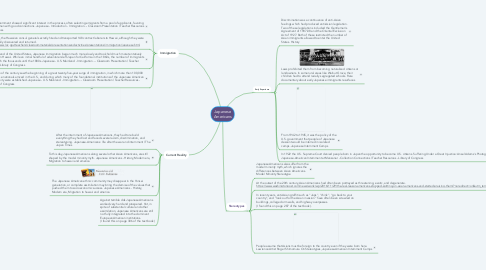Japanese Americans
by Tiffany Fairfield

1. Current Reality
1.1. After the internment of Japanese Americans, they had to rebuild everything they had lost and faced severe racism, discrimination, and stereotyping. Japanese-Americans: life after the war and internment | The Japan Times
1.2. To this day, Japanese Americans along several other Asian Americans, are still shaped by the model minority myth. Japanese Americans - History, Modern era, Migration to hawaii and america
1.3. The Japanese American ethnic community may disappear in the Yonsei generation, or complete assimilation may bring the demise of the values that pushed them to socioeconomic success. Japanese Americans - History, Modern era, Migration to hawaii and america
1.4. Against terrible dds Japanese Americans worked very hard and prospered. Yet, in spite of substantial cultural and other assimilation, Japanese Americans are still not fully integrated into the dominant European American institutions. (I found this on page 306 of the text book)
2. Immigration
2.1. The Japanese government showed significant interest in the process, often selecting emigrants from a pool of applicants, favoring ambitious young men with good connections. Japanese - Introduction - Immigration...- Classroom Presentation | Teacher Resources - Library of Congress
2.2. In 1868, the Hawaiian consul general secretly hired and transported 148 contract laborers to Hawaii, although they were eventually discovered and returned. http://www.loc.gov/teachers/classroommaterials/presentationsandactivities/presentations/immigration/japanese.html
2.3. In the mainland of the United States, Japanese immigration began much more slowly and took hold much more tentatively than it had in Hawaii. While an initial handful of adventurers left Japan for California in the 1860s, the number of immigrants did not reach the thousands until the 1880s. Japanese - U.S. Mainland - Immigration...- Classroom Presentation | Teacher Resources - Library of Congress
2.4. The turn of the century saw the beginning of a great twenty-five-year surge of immigration, in which more than 100,000 Japanese nationals arrived in the U.S., and during which many of the foundational institutions of the Japanese American community were established. Japanese - U.S. Mainland - Immigration...- Classroom Presentation | Teacher Resources - Library of Congress
3. Early Experience
3.1. Discrimination was a continuance of anti-Asian feelings which had produced anti-Asian legislation. Two of these legislations included the Gentlemen's Agreement of 1907-08 and the Oriental Exclusion Act of 1927. Both of these restricted the number of Asian immigrants allowed to enter the United States. History
3.2. Laws prohibited them from becoming naturalized citizens or landowners. In some rural areas like Walnut Grove, their children had to attend racially segregated schools. Rare documentary about early Japanese immigrants resurfaces
3.3. From 1942 to 1945, it was the policy of the U.S. government that people of Japanese descent would be interred in isolated camps. Japanese Internment Camps
3.4. In 1922 the U.S. Supreme Court denied people born in Japan the opportunity to become U.S. citizens. Suffering Under a Great Injustice: Ansel Adams's Photographs of Japanese-American Internment at Manzanar - Collection Connections | Teacher Resources - Library of Congress
4. Stereotypes
4.1. Japanese Americans also suffer from the model minority myth, which ignores the differences between Asian Americans. Model Minority Stereotype
4.2. At the outset of the 20th century, Asian Americans had often been portrayed as threatening, exotic, and degenerate. https://www.washingtonpost.com/news/wonk/wp/2016/11/29/the-real-reason-americans-stopped-spitting-on-asian-americans-and-started-praising-them/?noredirect=on&utm_term=.985e0b4096f9
4.3. In recent years, anti-Asian graffiti such as "Japs", "chink", "go back to your country", and "look out for the Asian invasion" have often been scrawled on buildings, college dorm walls, and highway overpasses. (I found this on page 287 of the text book).
4.4. People assume that Asians must be foreign to the country even if they were born here. Lawrence Artist Roger Shimomura On Stereotypes, Japanese-American Internment Camps


